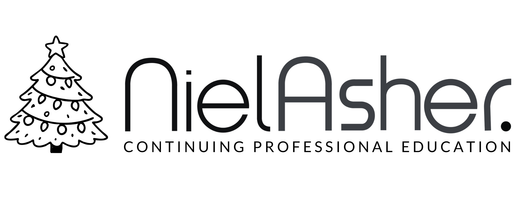Neck Pain: Types and the Role of Bowen Therapy
Neck pain is a prevalent condition that affects millions of people worldwide. It can stem from various causes and present with different symptoms, ranging from mild discomfort to severe, debilitating pain that limits mobility and affects daily life. Understanding the types of neck pain and their underlying causes is crucial for effective management. Among the many therapies available for treating neck pain, Bowen Therapy has emerged as a gentle yet effective option for alleviating symptoms and promoting overall well-being.
Types of Neck Pain
Neck pain can be categorized into several types based on its cause and presentation. Here are the most common types:
-
Muscle Strain and Tension: Muscle strain and tension are the most common causes of neck pain. Poor posture, prolonged sitting or computer use, sleeping in an awkward position, or repetitive stress can strain the neck muscles. This type of pain is often characterized by stiffness, soreness, and limited range of motion.
-
Cervical Disc Degeneration: Degenerative changes in the cervical spine, often due to aging, can lead to disc degeneration. This condition occurs when the intervertebral discs lose their cushioning ability, causing pain, inflammation, and reduced flexibility in the neck. This type of neck pain can sometimes radiate to the shoulders and arms.
-
Cervical Radiculopathy: When a nerve root in the cervical spine becomes compressed or irritated, it can lead to cervical radiculopathy, commonly known as a "pinched nerve." This condition often results from herniated discs, bone spurs, or spinal stenosis. Symptoms include sharp, shooting pain that radiates down the arm, along with numbness, tingling, or weakness in the affected limb.
-
Whiplash: Whiplash is a neck injury caused by a sudden jerking motion of the head, such as in a car accident. It can lead to muscle and ligament injuries, resulting in pain, stiffness, headaches, and difficulty moving the neck. Whiplash can also cause dizziness, fatigue, and cognitive difficulties in more severe cases.
-
Cervicogenic Headache: Neck pain can also be associated with headaches, known as cervicogenic headaches. This type of headache originates in the cervical spine and is often caused by nerve irritation, muscle tension, or joint dysfunction in the neck. Pain is typically felt at the base of the skull, radiating to the temples, forehead, or behind the eyes.
-
Facet Joint Pain: The facet joints are small joints located between the vertebrae that allow for movement and stability in the spine. Degeneration, arthritis, or injury to these joints can lead to localized neck pain, stiffness, and difficulty with neck movement. Facet joint pain is often exacerbated by specific movements or prolonged positions.
-
Tension-Type Headache-Related Neck Pain: Tension-type headaches are often accompanied by neck pain, especially when the muscles at the base of the skull are tight. This condition is commonly triggered by stress, poor posture, or lack of sleep.
Bowen Therapy for Neck Pain Relief
Bowen Therapy is a gentle, non-invasive manual therapy that involves the application of subtle, rolling movements over muscles, tendons, and fascia. Developed by Thomas Ambrose Bowen in the 1950s in Australia, this therapy focuses on stimulating the body's self-healing mechanisms by triggering a response in the autonomic nervous system. Bowen Therapy is unique in that it uses light pressure and incorporates pauses between sets of movements to allow the body to respond and initiate the healing process.
Bowen Therapy has gained recognition as an effective treatment for various types of musculoskeletal pain, including neck pain. It can be particularly helpful in relieving muscle tension, reducing inflammation, improving circulation, and restoring mobility. Here’s how Bowen Therapy can be applied to address neck pain:
-
Relaxation of Muscle Tension and Spasms: Many cases of neck pain are related to muscle tension, spasms, and trigger points. Bowen Therapy targets specific muscles in the neck, shoulders, and upper back with gentle rolling movements. These movements help relax tight muscles, release tension, and reduce spasms. By promoting muscle relaxation, Bowen Therapy can alleviate the discomfort associated with conditions like muscle strain, tension-type headaches, and whiplash.
-
Improvement of Blood Circulation and Lymphatic Drainage: The gentle movements of Bowen Therapy stimulate blood flow and lymphatic drainage in the treated areas. Improved circulation brings more oxygen and nutrients to the tissues, aiding in healing and reducing inflammation. This effect is beneficial for conditions such as cervical disc degeneration and facet joint pain, where inflammation and poor circulation can exacerbate symptoms.
-
Rebalancing of the Autonomic Nervous System: One of the key principles of Bowen Therapy is its ability to influence the autonomic nervous system. By stimulating the parasympathetic nervous system, Bowen Therapy encourages the body to enter a state of relaxation, rest, and recovery. This effect can help reduce the pain signals and sensitivity associated with chronic conditions like cervical radiculopathy and cervicogenic headaches.
-
Gentle Realignment and Postural Correction: Poor posture and alignment issues are significant contributors to neck pain. Bowen Therapy can help correct postural imbalances by gently releasing tension in the muscles and fascia that affect the alignment of the neck and spine. This realignment can relieve pressure on the nerves and joints, providing relief for conditions such as cervical radiculopathy and facet joint dysfunction.
-
Support for Whiplash Recovery: Whiplash injuries often involve a combination of muscle strain, ligament sprain, and nerve irritation. Bowen Therapy is a gentle approach that can be particularly beneficial for whiplash recovery as it does not involve forceful manipulation. The therapy can help relieve muscle tension, reduce pain, and promote healing without aggravating the injured tissues.
-
Holistic Approach to Pain Management: Bowen Therapy takes a holistic approach to pain management, addressing not just the symptoms but also the underlying causes of neck pain. This approach includes working on related areas such as the shoulders, back, and even the jaw (temporomandibular joint) to ensure a comprehensive treatment that supports overall well-being.
Evidence Supporting Bowen Therapy for Neck Pain
While more high-quality research is needed to fully establish the mechanisms and efficacy of Bowen Therapy, several studies and clinical observations suggest its potential benefits for managing neck pain. A study by Romani et al. (2010) found that patients with nonspecific neck pain who received Bowen Therapy reported significant improvements in pain, mobility, and quality of life. Similarly, a randomized controlled trial by Murphy et al. (2012) demonstrated that Bowen Therapy, in combination with standard care, was effective in reducing pain and disability in patients with chronic neck pain.
Moreover, a review by Carter et al. (2015) on the effectiveness of Bowen Therapy for musculoskeletal conditions highlighted that while the current evidence is mostly anecdotal, many patients report favorable outcomes in terms of pain reduction and improved function. The gentle nature of Bowen Therapy makes it a suitable option for individuals who may not tolerate more aggressive manual therapies.
Conclusion
Neck pain is a complex condition with various underlying causes, and its management often requires a multifaceted approach. Bowen Therapy offers a gentle, non-invasive option that can effectively alleviate symptoms of neck pain by relaxing muscles, reducing tension, improving circulation, and promoting overall healing. While more research is needed to establish standardized protocols, Bowen Therapy remains a valuable tool in the arsenal of therapies for neck pain, particularly for those seeking a holistic approach to recovery.
If you are considering Bowen Therapy for neck pain, it is essential to consult with a qualified therapist who is experienced in this modality. By working with a professional, you can ensure that the therapy is tailored to your specific needs and conditions, maximizing its potential benefits for your neck pain relief.
References
- Carter, B., & Homewood, J. (2015). The effectiveness of Bowen Technique for musculoskeletal pain: A systematic review. Journal of Bodywork and Movement Therapies, 19(4), 602-612.
- Murphy, J., & Curry, J. (2012). Bowen therapy for neck pain: A randomized controlled trial. Manual Therapy Research Journal, 6(3), 105-111.
- Romani, W., et al. (2010). Effects of Bowen Therapy on nonspecific neck pain: A clinical trial. International Journal of Therapeutic Massage & Bodywork, 3(4), 12-19.
About Niel Asher Education
Niel Asher Education (NAT Global Campus) is a globally recognised provider of high-quality professional learning for hands-on health and movement practitioners. Through an extensive catalogue of expert-led online courses, NAT delivers continuing education for massage therapists, supporting both newly qualified and highly experienced professionals with practical, clinically relevant training designed for real-world practice.
Beyond massage therapy, Niel Asher Education offers comprehensive continuing education for physical therapists, continuing education for athletic trainers, continuing education for chiropractors, and continuing education for rehabilitation professionals working across a wide range of clinical, sports, and wellness environments. Courses span manual therapy, movement, rehabilitation, pain management, integrative therapies, and practitioner self-care, with content presented by respected educators and clinicians from around the world.
Known for its high production values and practitioner-focused approach, Niel Asher Education emphasises clarity, practical application, and professional integrity. Its online learning model allows practitioners to study at their own pace while earning recognised certificates and maintaining ongoing professional development requirements, making continuing education accessible regardless of location or schedule.
Through partnerships with leading educational platforms and organisations worldwide, Niel Asher Education continues to expand access to trusted, high-quality continuing education for massage therapists, continuing education for physical therapists, continuing education for athletic trainers, continuing education for chiropractors, and continuing education for rehabilitation professionals, supporting lifelong learning and professional excellence across the global therapy community.

Continuing Professional Education
Looking for Massage Therapy CEUs, PT and ATC continuing education, chiropractic CE, or advanced manual therapy training? Explore our evidence-based online courses designed for hands-on professionals.


















